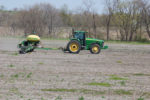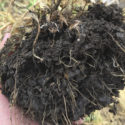Advertise Follow Us
No-Till Farming 101
Back to Basics with No-Till Planting
Leveling Your No-Till Planter for Better Results
A simple review of the planter bar’s setup can help no-tillers prevent many problems with seed placement and furrow closing and provide you with better planting results.
Read More
Digital Demonstration Replay
[Digital Demonstration] Putting New Planting Technologies to Work to Boost Profits and Efficiency
Read MoreBreaking Through to the ‘Root’ Cause of Compacted Soil
Soil compaction can limit yields, cause flooding and runoff and limit nutrient uptake in plants. But breaking up compacted soils with iron is not the answer, according to soil health consultant Jim Hoorman — biology is.
Read More











